House Plants Care Guide
ZAMIOCULCAS ZAMIIFOLIA or ZZ PLANT

The ZZ plant is a very popular houseplant native of Africa thanks. Its stunning dark green and glossy leaves make it the perfect statement plant, while its very low maintenance nature makes it the perfect beginner friendly plant. ZZ plants are also known for their great air purifying qualities.
Water: zz plants don’t require a lot of water, evenly spread 1 or 2 cups of water onto the soil every 2 or 3 weeks in spring and summer and every 3 or 4 weeks in autumn and winter. Let the soil dry out in between waterings to avoid overwatering.
Light: zz plants can tolerate shade and will be happy in a wide range of light conditions, from very low to very bright. Avoid direct sunlight as it may scorch the leaves.
Temperature: zz plants can tolerate low temperature (8*C), but will be happier in average room temperature (16*C - 24*C)
Humidity: zz plants will do fine in normal household humidity and will cope with drier conditions for short periods of time.
Feed: use a small dose of liquid fertiliser once a month during growing season (spring and summer).
Toxicity: unfortunately zz plants are mildly toxic so keep away from children and pets.
FICUS ELASTICA or RUBBER PLANT
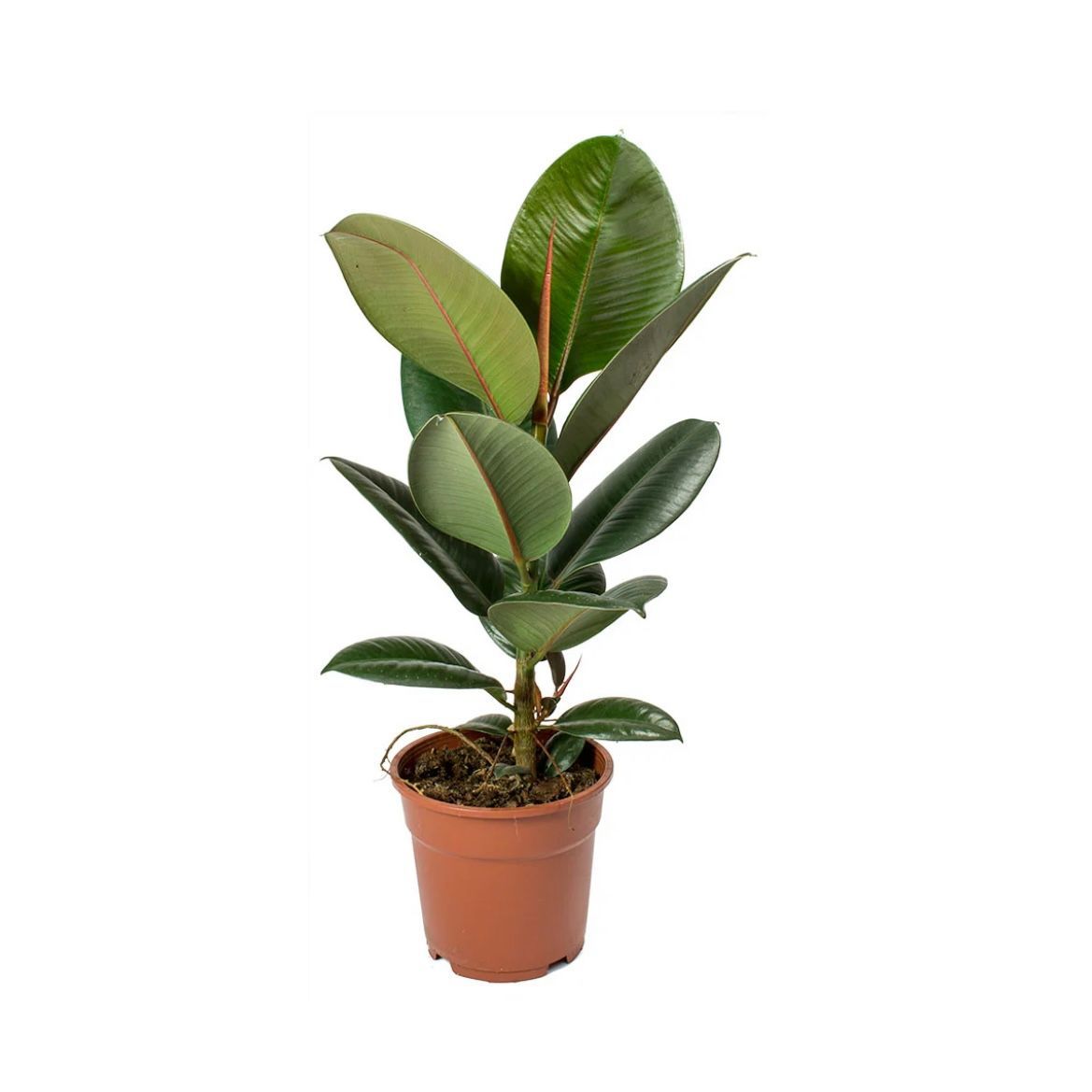
The rubber plant is the ideal houseplant for you if you’re looking for a low maintenance, but fast growing plants. In fact this plant can reach incredible heights in just a few years, and thanks to its large and glossy leaves it will quickly become a statement piece in your house. Rubber plants are also have great air purifying qualities.
Water: water every 2 or 3 weeks in spring and summer and every 3 or 4 weeks in autumn and winter. Let the top soil dry out in between waterings to avoid overwatering as this will cause leaf drop.
Light: rubber plants prefer bright indirect sunlight, but will cope in lower light conditions. Avoid direct sunlight as it may scorch the leaves.
Temperature: rubber plants will do fine in normal household temperature, but will be happier in in slightly warmer environments (16*C - 24*C). Avoid cold draughts.
Humidity: rubber plants will do fine in normal household humidity and will cope with drier conditions for short periods of time.
Feed: use a small dose of liquid fertiliser once a month during growing season (spring and summer).
Toxicity: unfortunately rubber plants are consider poisonous so keep away from children and pets. Avoid this plant if you have a latex allergy.
ANTHURIUMS or FLAMINGO FLOWER

Flamingo flowers are the kings and queens of all tropical houseplants and they’re the perfect plant for you if you’re looking to add an exotic touch to you house. Native of South America and the Caribbean, they quickly became popular thanks to their stunning heart shaped leaves and their royal red flowers.
Water: keep the soil moist. Water every 1 to 2 weeks. Let the top soil dry out slightly in between waterings to avoid overwatering. The plant will start to droop when too dry and in need of more water.
Light: anthuriums prefer moderate to bright indirect sunlight, but will cope in lower light conditions. Avoid direct sunlight as it may scorch the leaves.
Temperature: anthuriums will do fine in normal household temperature (16*C - 24*C). Avoid cold and hot draughts.
Humidity: anthuriums enjoy high levels of humidity so mist regularly or keep them in the bathroom.
Feed: use a small dose of liquid fertiliser once or twice a month during growing season (spring and summer).
Toxicity: unfortunately anthuriums are consider poisonous so keep away from children and pets.
CALATHEA SANDERIANA or PIN STRIPED CALATHEA
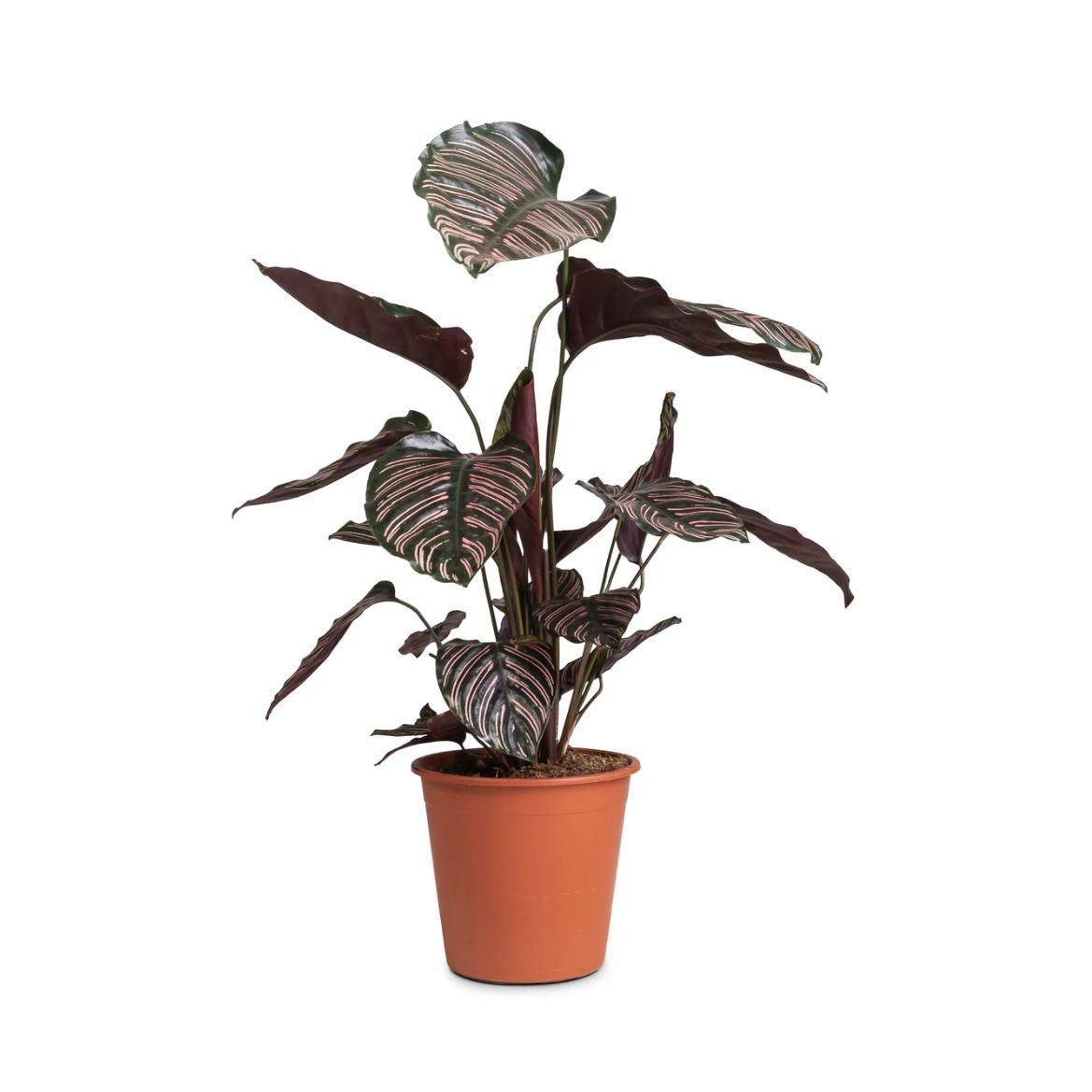
Vibrant and elegant at the same time, this beautiful Calathea Sanderiana is an absolute masterpiece. The large dark green leaves have a beautiful glossy finish and light pink stripes in a fishbone pattern, and to make them even more special they are purple underneath!
Water: keep the soil moist, but not wet. Water weekly, but do not let the plant sit in water. Ideally used filtered or rain water.
Light: calathea can tolerate some shade but will thrive in indirect sunlight. Direct sunlight will scorch the leaves.
Temperature: calathea prefer warmer temperature (18*C - 24*C), but can tolerate slightly lower temperature (15*C).
Humidity: calathea enjoy high levels of humidity so mist regularly or keep them in the bathroom.
Feed: use a small dose of liquid fertiliser once or twice a month during growing season (spring and summer).
Toxicity: this calathea is considered non toxic.
CHAMAEDORA ELEGANS or PARLOUR PALM
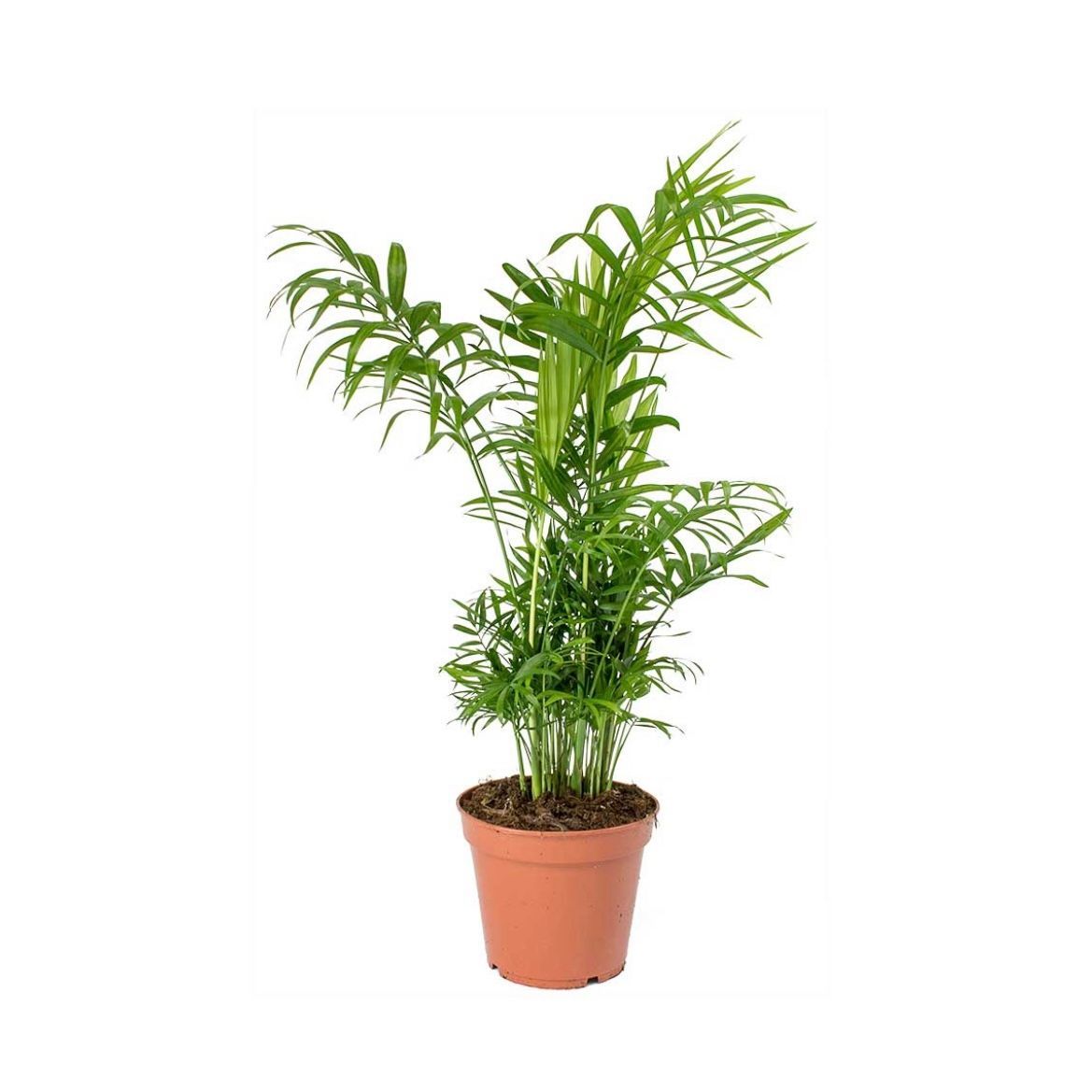
Chamaedorea elegans, or parlour palm, is a species of small palm trees native to the rainforests of Southern Mexico and Guatemala. An elegant plant, easy to look after and with excellent air purifying qualities.
Water: keep the soil moist, but not wet. Water weekly, but do not let the plant sit in water.
Light: calathea can tolerate some shade but will thrive in indirect sunlight. Direct sunlight will scorch the leaves.
Temperature: palms thrive in slightly warmer household temperatures (18*C - 24*C)
Humidity: palms enjoy high levels of humidity so mist regularly.
Feed: use a small dose of liquid fertiliser once or twice a month during growing season (spring and summer).
Toxicity: this palm is considered non toxic.
SPATHIPHYLLUM or PEACE LILY
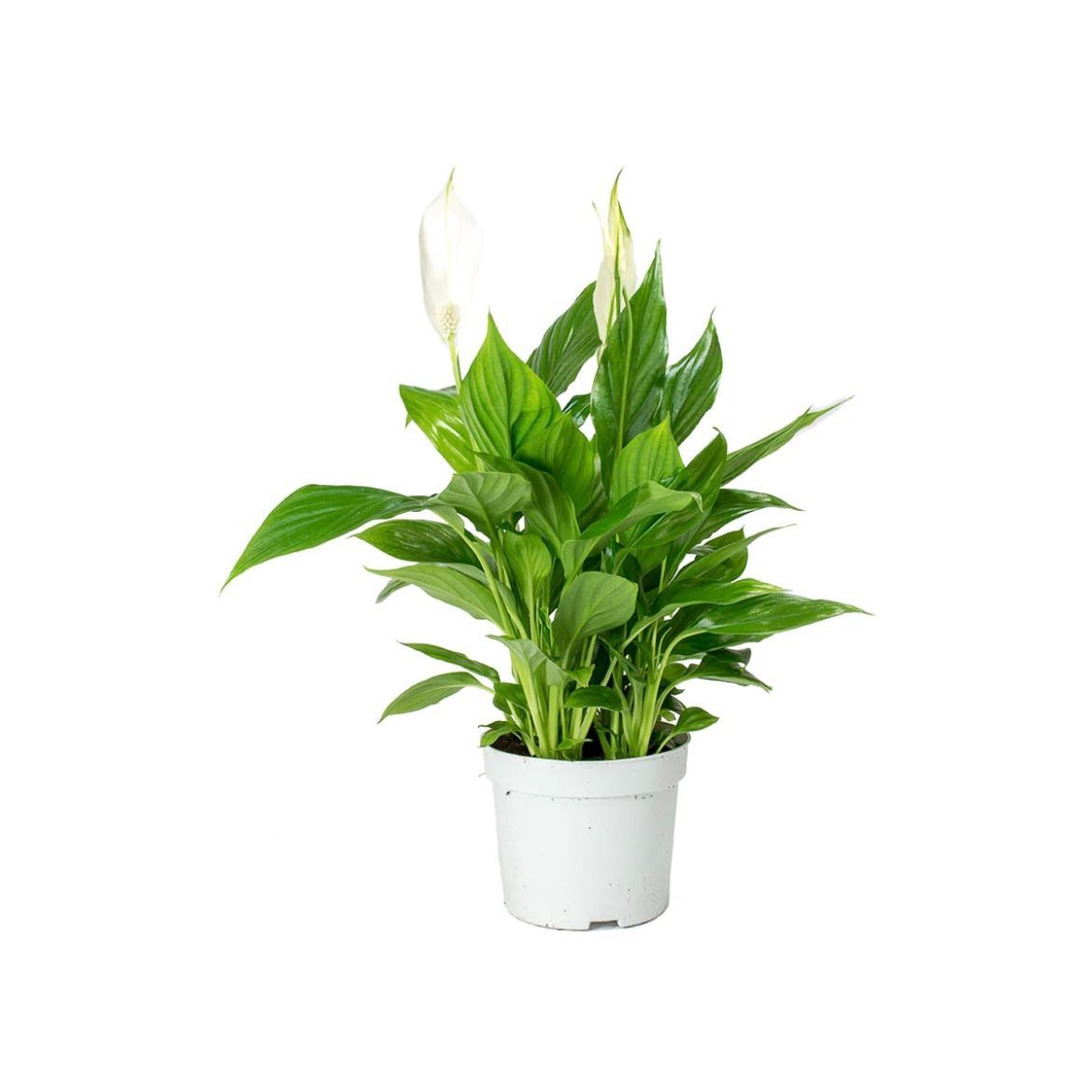
Spathiphyllum, also known as peace lily, is a low light and low maintenance houseplant. With its glossy green leaves and its beautiful white flowers this plant will help you brighten up those difficult shady corners. They’re also great air purifying plants.
Water: keep the soil moist, but not wet. Water weekly, but do not let the plant sit in water.
Light: peace lilies prefer moderate to bright indirect sunlight, but will cope in lower light conditions. Avoid direct sunlight as it may scorch the leaves.
Temperature: piece lilies prefer warmer household temperature (18*C - 24*C), but can tolerate slightly lower temperature (15*C).
Humidity: peace lilies enjoy high levels of humidity so mist regularly or keep them in the bathroom.
Feed: use a small dose of liquid fertiliser once or twice a month during growing season (spring and summer).
Toxicity: unfortunately peace lilies are mildly toxic so keep away from children and pets.
SENECIO ROWLEYANUS/HERREIANUS or STRING OF PEARLS/BEADS
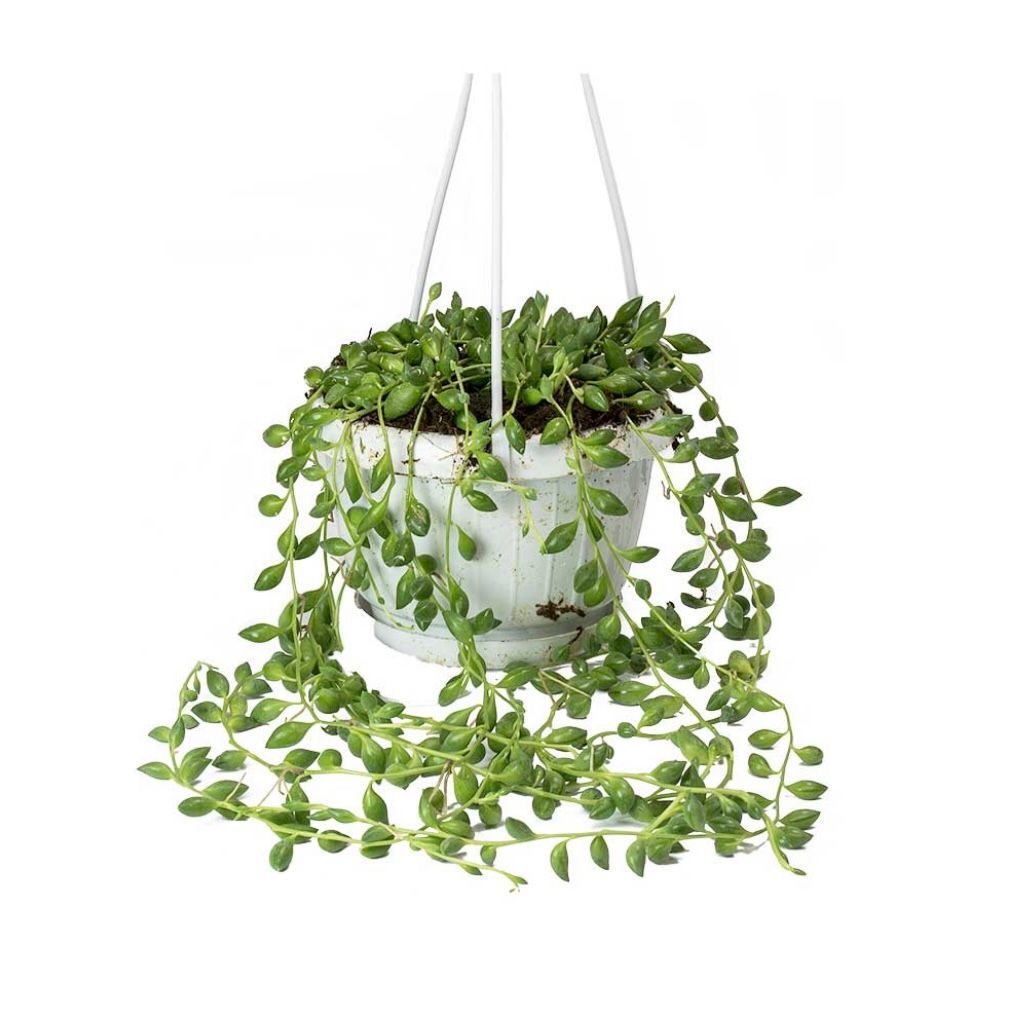
String of pearls/beads are unique, quirky succulent with perla/bead like leaves growing all along thin, trailing stems. These plants are perfect for hanging pots or cascading from a shelf. When kept in their ideal growing conditions they grow cute little fuzzy white flowers in spring and summer.
Water: senecio are very drought tolerant. Let the soil dry out in between waterings to avoid overwatering. Ideally bottom water by seating your plant with its nursery pot in a bowl full of room temperature water. Leave for about an hour, then place in its decorative pot. Do not let the plant sit in water.
Light: senecio prefer bright indirect sunlight and will be happy with some morning or afternoon direct sunlight. Avoid midday direct sunlight.
Temperature: senecio are happier in slightly warmer environments (18*C - 24*C). Avoid cold draughts.
Humidity: senecio will do fine in normal household humidity and will cope with drier conditions for short periods of time.
Feed: use a small dose of liquid fertiliser once a month during growing season (spring and summer).
Toxicity: this plant is mildly toxic so keep away from children and pets.
KALANCHOE
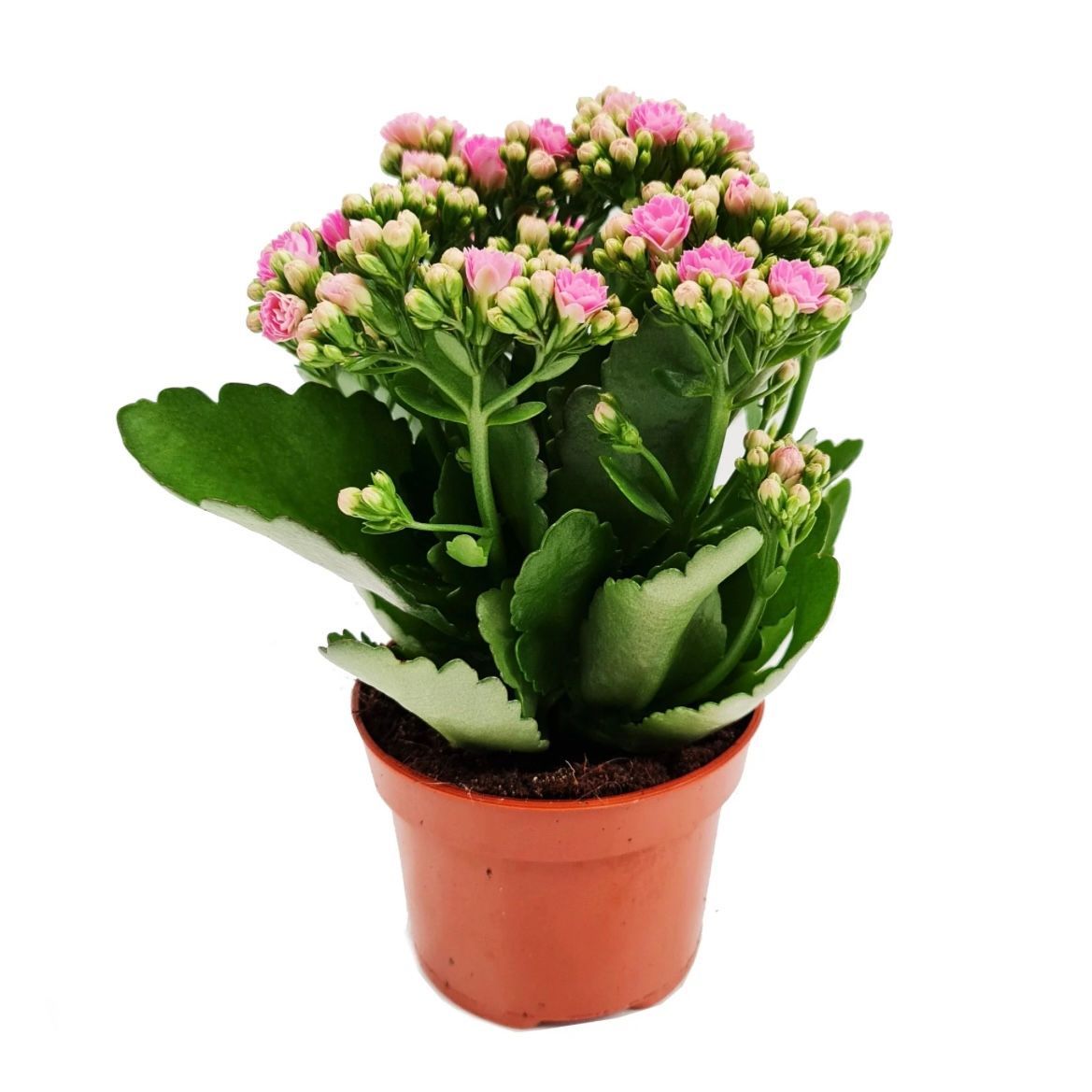
Kalanchoes are very pretty, very low maintenance succulent plants. They have thick and shiny green leaves and clusters of very small colourful flowers at the top of each stem, making them the perfect little plant to bring in some colour and brighten up any room.
Water: senecio are very drought tolerant. Let the soil dry out in between waterings to avoid overwatering. Ideally bottom water by seating your plant with its nursery pot in a bowl full of room temperature water. Leave for about an hour, then place in its decorative pot. Do not let the plant sit in water.
Light: kalanchoes prefer bright indirect sunlight and will be happy with some morning or afternoon direct sunlight. Avoid midday direct sunlight.
Temperature: kalanchoes are happier in slightly warmer environments (18*C - 24*C). Avoid cold draughts.
Humidity: kalanchoes will do fine in normal household humidity and will cope with drier conditions for short periods of time.
Feed: use a small dose of liquid fertiliser once a month during growing season (spring and summer).
Toxicity: this plant is mildly toxic so keep away from children and pets.
CACTI AND SUCCULENTS
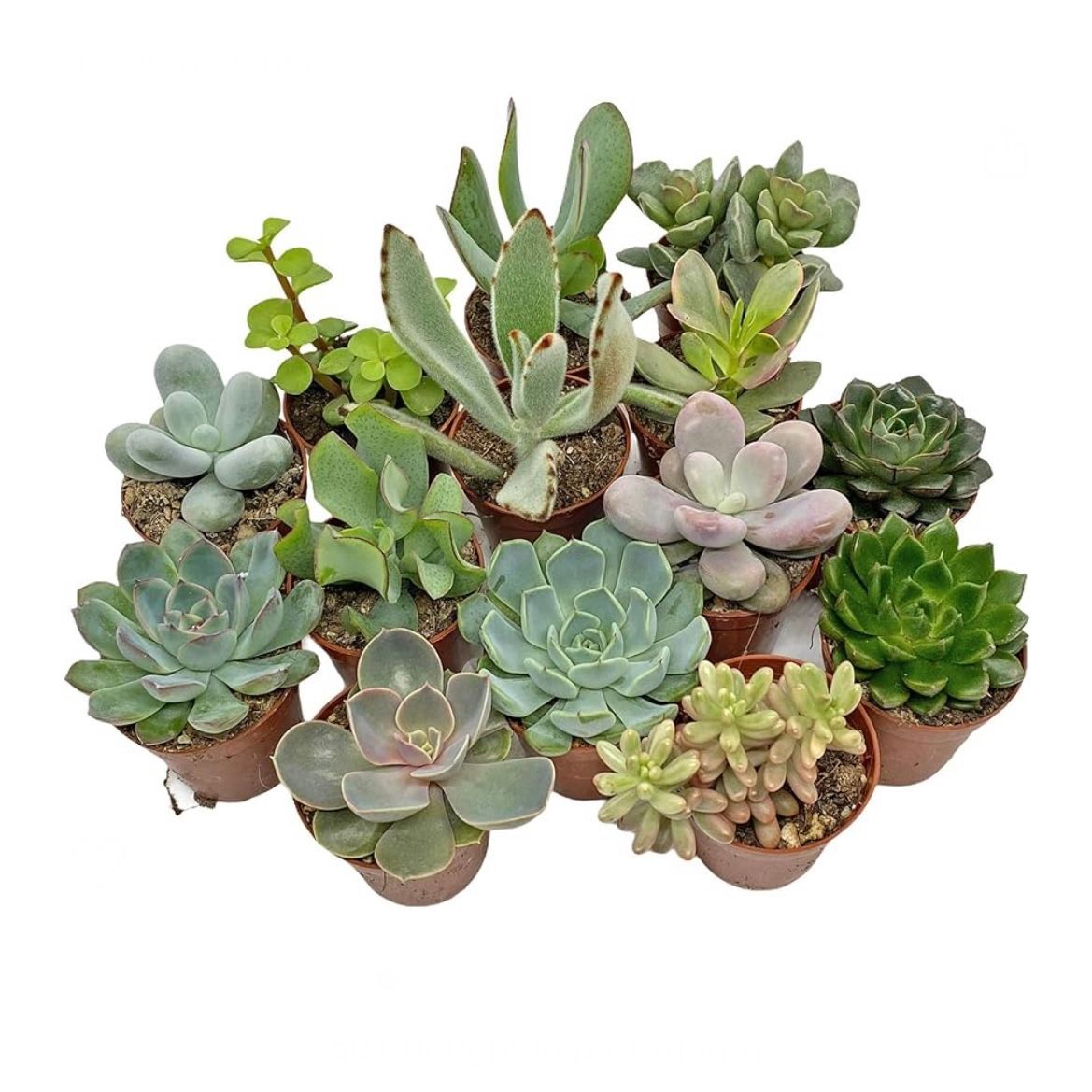
Water: cacti and succulents are very drought tolerant. Let the soil dry out in between waterings to avoid overwatering. Ideally bottom water by seating your plant with its nursery pot in a bowl full of room temperature water. Leave for about an hour, then place in its decorative pot. Do not let the plant sit in water.
Light: cacti and succulents prefer bright indirect sunlight and will be happy with some morning or afternoon direct sunlight. Avoid midday direct sunlight.
Temperature: cacti and succulents are happier in slightly warmer environments (18*C - 24*C). Avoid cold draughts.
Humidity: cacti and succulents will do fine in normal household humidity and will cope with drier conditions for short periods of time.
Feed: use a small dose of liquid fertiliser once a month during growing season (spring and summer).
Toxicity: cacti are non toxic, but some succulents can be mildly toxic so keep away from children and pets.
HYDRENGEA
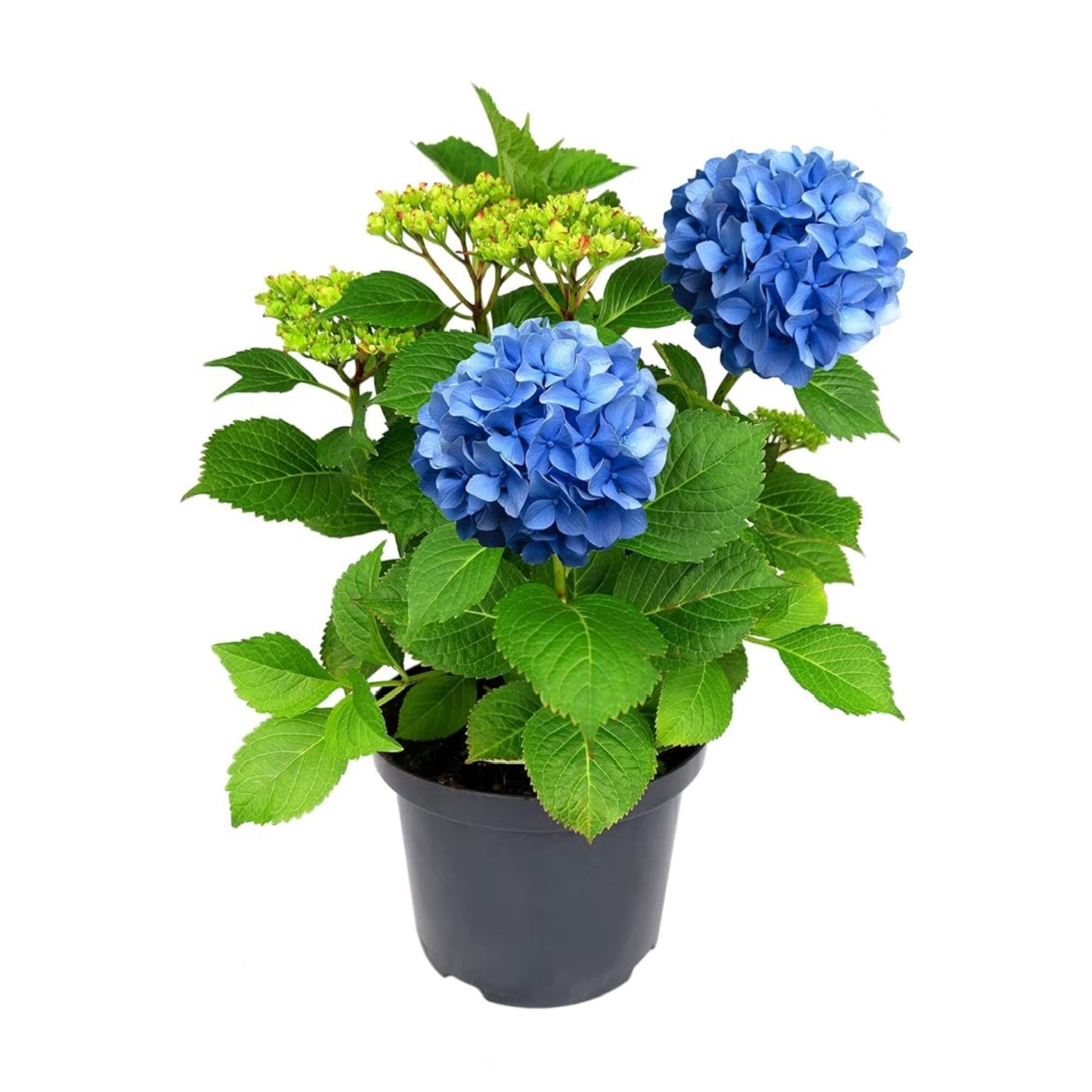
This beautiful garden plant with iconic globe like flowers can thankfully be grown indoors as well, and it’s relatively low maintenance too as long as you can satisfy the plant’s basic needs.
Water: keep the soil moist, but not wet. Water once or twice a week.
Light: hydrangea prefer bright indirect sunlight. Avoid direct sunlight as it may scorch the leaves.
Temperature: hydrangea prefer lower temperature (10*C-16*C)
Humidity: hydrangea love humidity so use a humidifier if the indoor air is dry or place the plant on a humidity tray (a tray filled with pebbles and water that will slowly evaporate and create a humid environment around the plant).
Feed: use a small dose of liquid fertiliser once a week while the plant is blooming and once a month when not in bloom.
Toxicity: unfortunately hydrangeas are toxic so keep away from children and pets.
ROSE
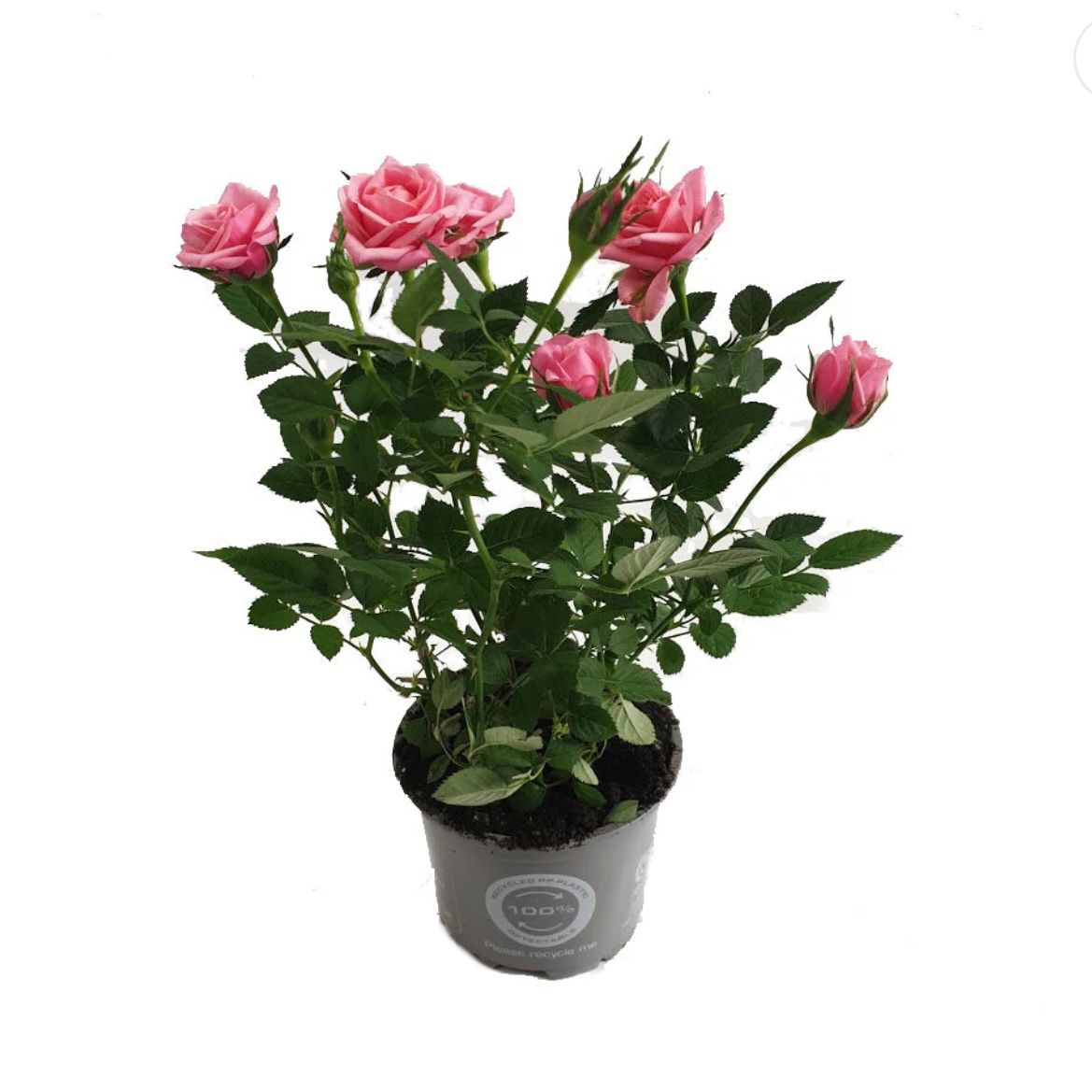
Did you know there’s a variety of miniature roses that can be kept as a houseplant? And they’re also pretty easy to grow as long as you can satisfy the plant’s basic needs.
Water: keep the soil moist, but not wet. Water once or twice a week.
Light: indoor roses prefer bright indirect sunlight, but can benefit from being exposed to morning or afternoon direct sunlight. Avoid midday direct sunlight.
Temperature: indoor roses prefer slightly warmer temperature (16*C-24*C)
Humidity: indoor roses love humidity so use a humidifier if the indoor air is dry or place the plant on a humidity tray (a tray filled with pebbles and water that will slowly evaporate and create a humid environment around the plant).
Feed: use a small dose of liquid fertiliser once a week while the plant is blooming and once a month when not in bloom.
Toxicity: unfortunately some parts of the rose plant are toxic so keep away from children and pets.
JASMINE
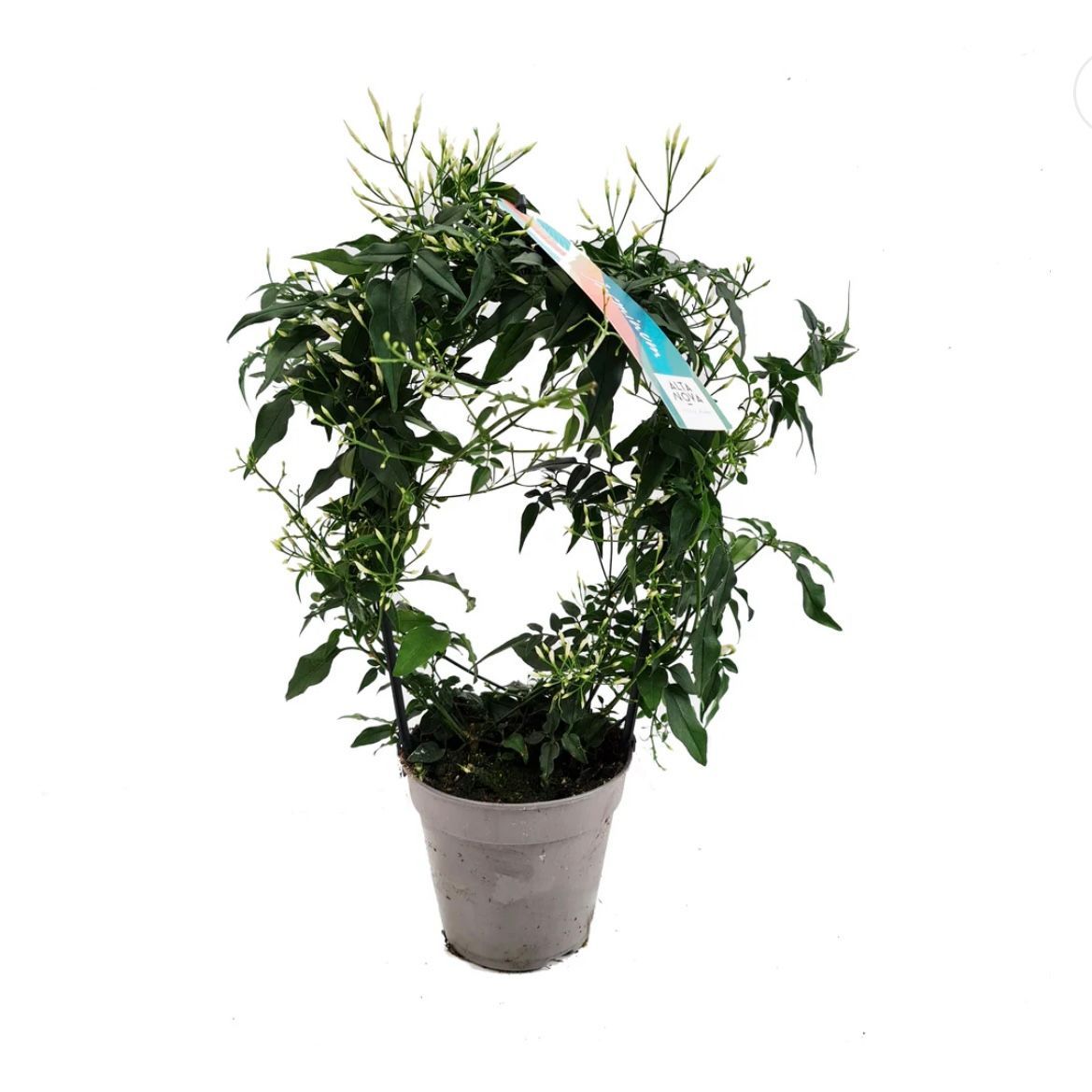
If sweet, nighttime fragrances are your thing, then look no further, you found the plant for you. This beautiful variety of indoor jasmine is particularly fragrant at night, but rest assured the plant will look gorgeous in any room at any time of day.
Water: keep the soil moist, but not wet. Water once or twice a week.
Light: indoor jasmine prefer bright indirect sunlight, but can benefit from being exposed to morning or afternoon direct sunlight. Avoid midday direct sunlight.
Temperature: jasmine prefer lower temperature (10*C-16*C)
Humidity: jasmine love humidity so use a humidifier if the indoor air is dry or place the plant on a humidity tray (a tray filled with pebbles and water that will slowly evaporate and create a humid environment around the plant). Mist regularly as well.
Feed: use a small dose of liquid fertiliser once a week while the plant is blooming and once a month when not in bloom.
Toxicity: unfortunately jasmine is toxic so keep away from children and pets.
STEPHANOTIS FLORIBUNDA or MADAGASCAR JASMINE
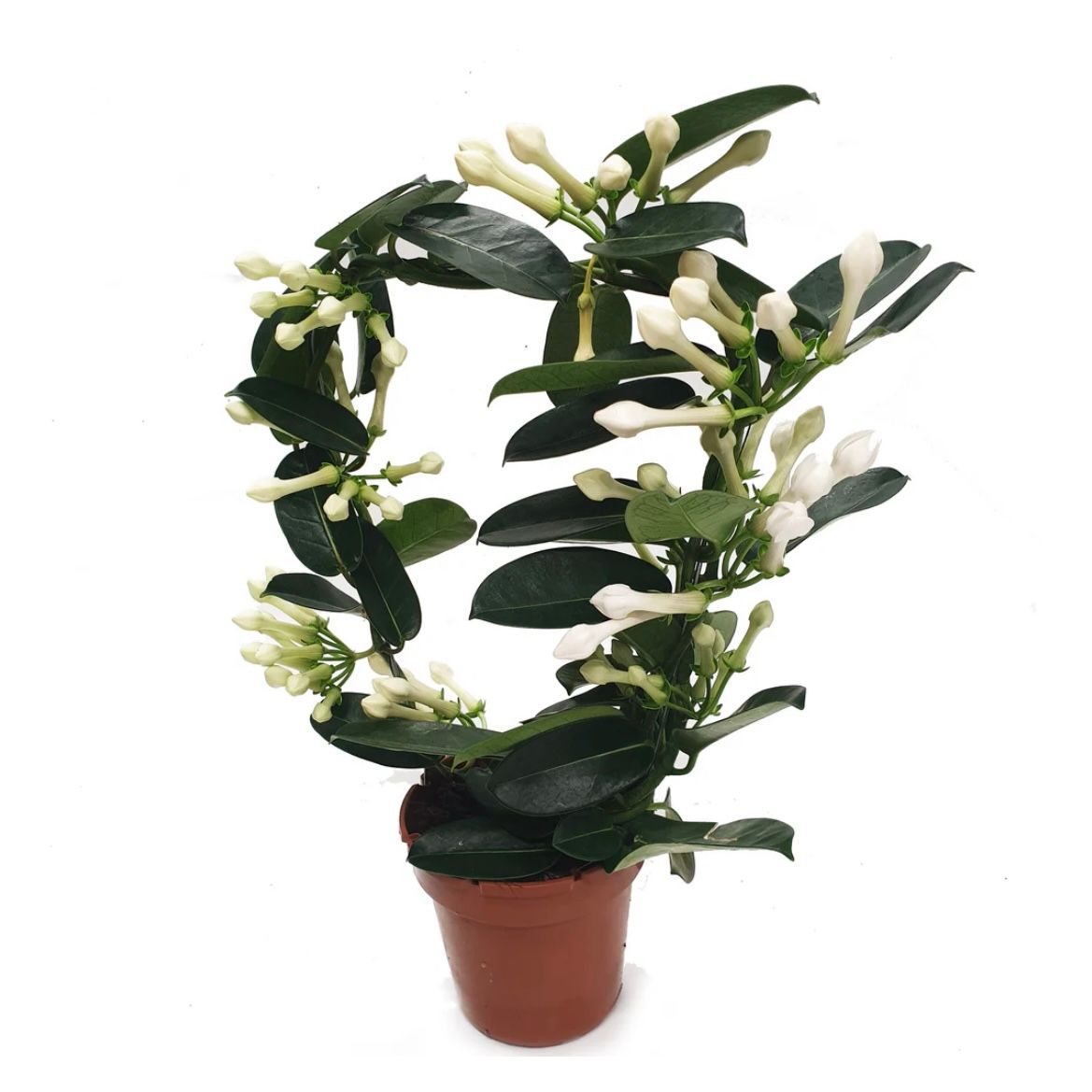
Stephanotis Floribunda is a beautiful indoor flowering plant, known for its jasmine-scented white flowers which last from spring to autumn. Stephanotis is a vine so it’s usually trained to grow over a wire hoop or a trellis.
Water: keep the soil moist, but not wet. Water weekly.
Light: stephanotis prefer bright indirect sunlight, but can benefit from being exposed to morning or afternoon direct sunlight. Avoid midday direct sunlight.
Temperature: stephanotis prefer slightly warmer temperature (18*C-24*C)
Humidity: stephanotis loves humidity so use a humidifier if the indoor air is dry or place the plant on a humidity tray (a tray filled with pebbles and water that will slowly evaporate and create a humid environment around the plant). Mist regularly as well.
Feed: use a small dose of liquid fertiliser once a week while the plant is blooming and once a month when not in bloom.
Toxicity: unfortunately stephanotis is toxic so keep away from children and pets.
DRACAENA SANDERIANA or LUCKY BAMBOO
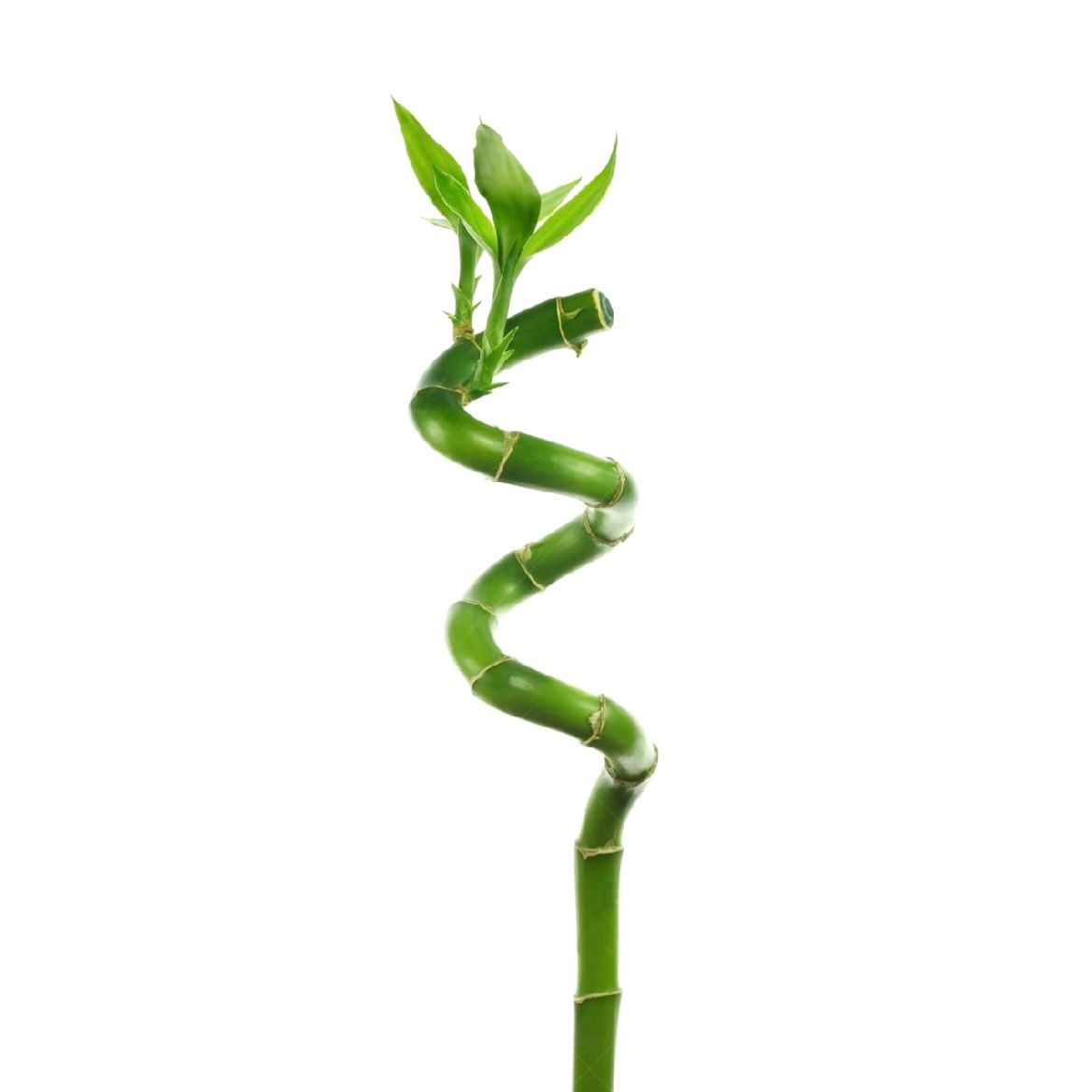
Dracaena Sanderiana, or Lucky Bamboo, is a species of flowering plant native to Central Africa. It’s very easy to grow and very low maintenance. It’s also a very popular housewarming gift due to its reputation for bringing luck to the household. Lucky bamboo can be grow both in soil or water.
Water, if in soil: keep the soil moist, but not wet. Water weekly.
Water, if in water: change water weekly. Use rainwater, filtered water or bottled water if possible.
Light: lucky bamboo prefer bright indirect sunlight, but can benefit from being exposed to morning or afternoon direct sunlight. Avoid midday direct sunlight.
Temperature: lucky bamboo prefer slightly warmer temperature (18*C-24*C)
Humidity: lucky bamboo enjoy high levels of humidity so mist regularly or keep them in the bathroom.
Feed: use a small dose of liquid fertiliser once or twice a month during growing season (spring and summer).
Toxicity: unfortunately lucky bamboo is toxic so keep away from children and pets.

